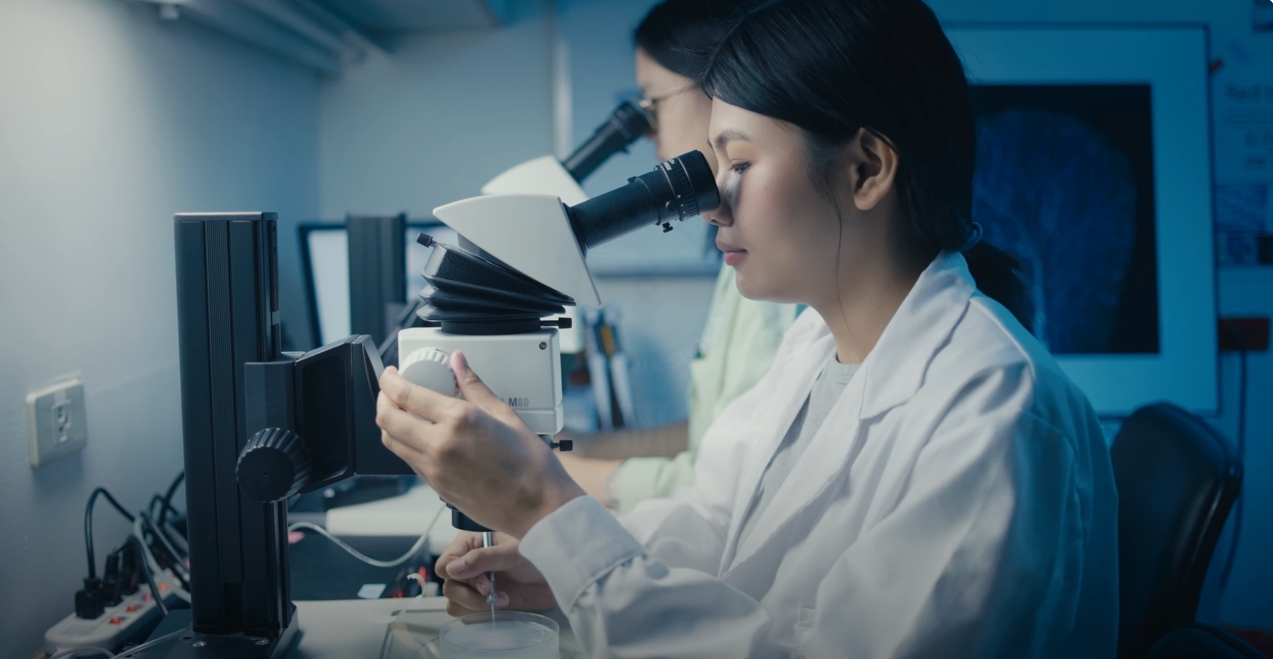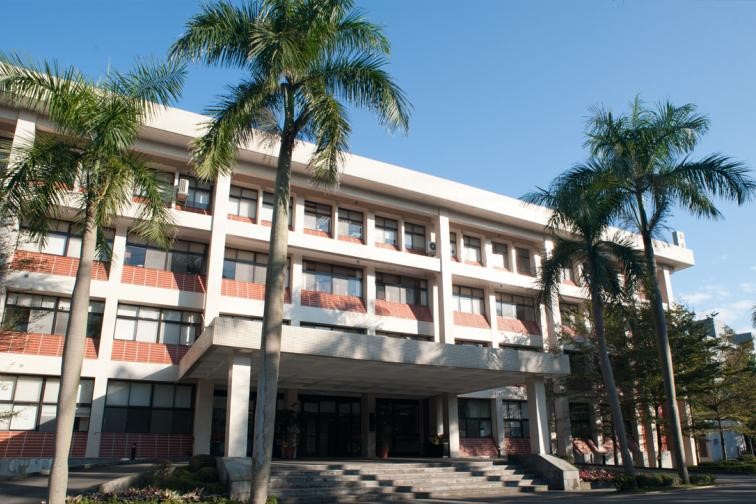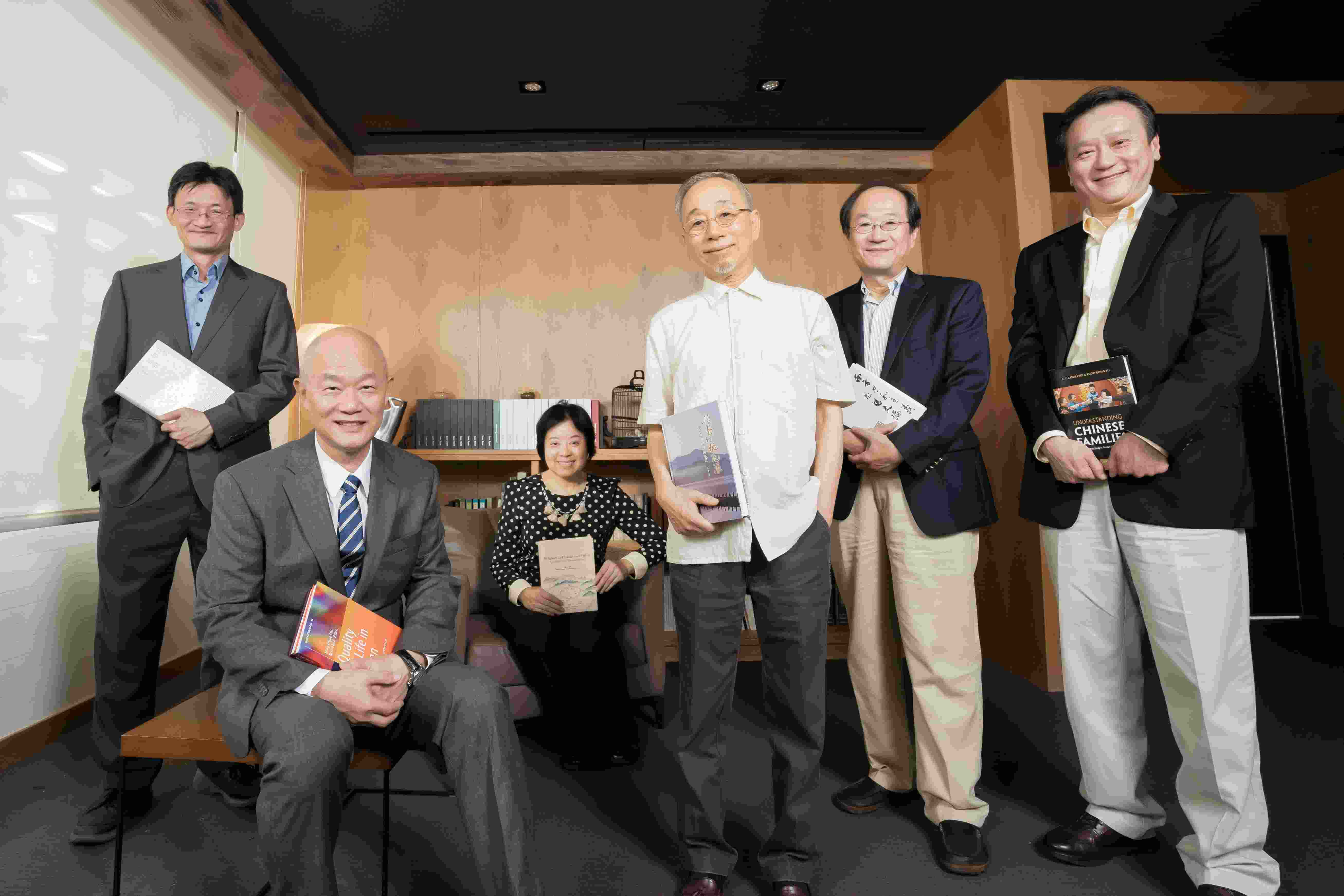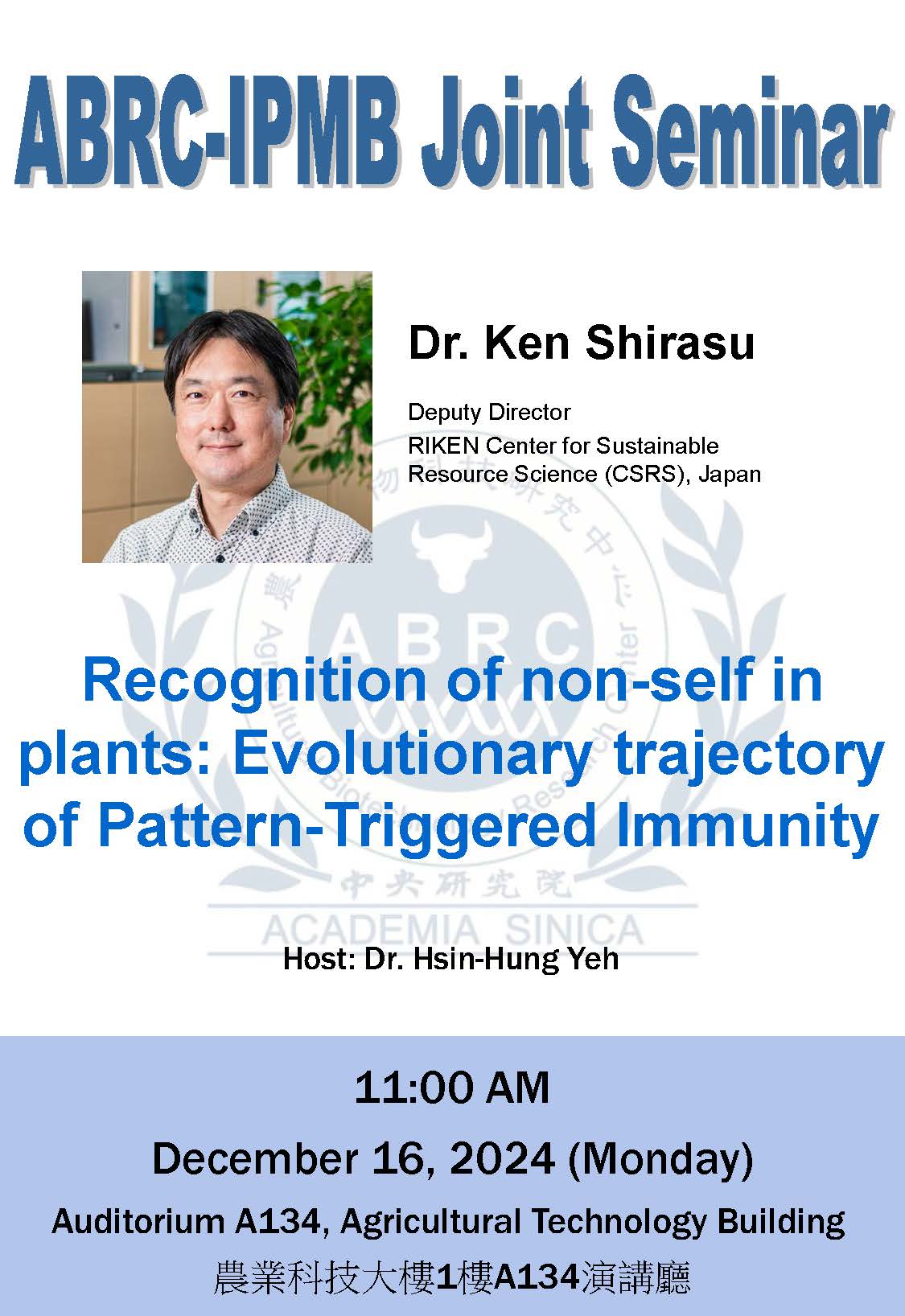- 演講或講座
- 農業生物科技研究中心
- 地點
本院農科大樓1樓A134演講廳
- 演講人姓名
Dr. Ken Shirasu (Deputy Director, RIKEN Center for Sustainable Resource Science (CSRS), Japan)
- 活動狀態
確定
- 活動網址
ABRC-IPMB Joint Seminar
Recognition of non-self in plants: Evolutionary trajectory of Pattern-Triggered Immunity
How much can plants "see" the living organisms around them? Since photosynthetic plants serve as a carbon source for other living organisms, they are bound to face "attacks" from various forms of life, and their ability to recognize such organisms is crucial for their survival strategies. Since plants ventured onto land, the living organisms around them have dramatically changed, suggesting that their recognition and response mechanisms have also evolved significantly. So, how do land plants recognize different organisms, and by what means? In eukaryotes, the fundamental concept of the innate immune system is that the recognition of external organisms primarily occurs through receptor proteins located on the cell surface, and plants are no exception. Microbe-Associated Molecular Patterns (MAMPs), which are substances derived from pathogens, are recognized by Pattern Recognition Receptors (PRRs) on the surface of plant cells. This immune response, triggered by the recognition of PAMPs via PRRs, is called PRR-Triggered Immunity (PTI), and is conserved across animals, plants, fungi, and other eukaryotes. In this seminar, I will discuss the factors involved in the PTI immune system in plants and its evolutionary trajectory. I will also introduce a newly identified MAMP from nematodes and the PRR in Arabidopsis required for its recognition, which was recently discovered in our laboratory.









 首頁
首頁

